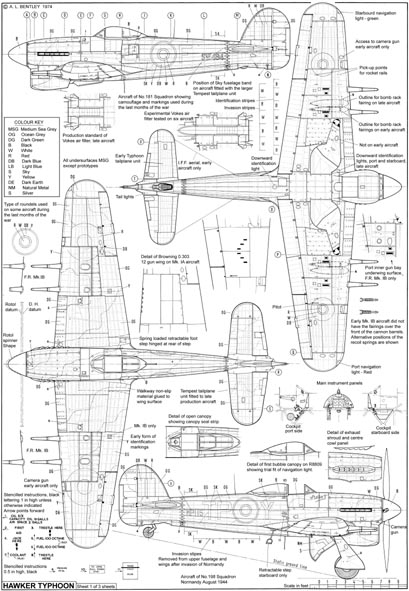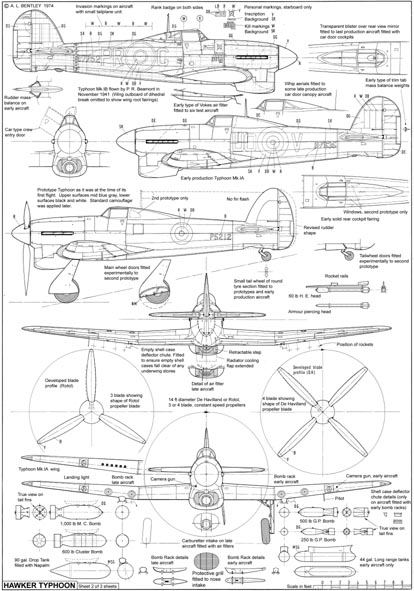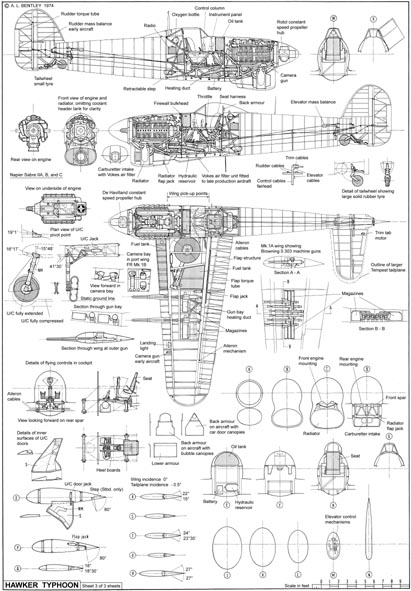The Hawker Typhoon (Tiffy in RAF slang), was a British single-seat fighter-bomber, produced by Hawker Aircraft. It was designed to be a medium-high altitude interceptor, as a direct replacement for the Hawker Hurricane, but several design problems were encountered, and it never completely satisfied this requirement.
Its service introduction in mid-1941 was plagued with problems, and for several months the aircraft faced a doubtful future. However, when the Luftwaffe brought the formidable Focke-Wulf Fw 190 into service in 1941 the Typhoon was the only RAF fighter capable of catching it at low altitudes; as a result it secured a new role as a low-altitude interceptor.
Through the support of pilots such as Roland Beamont it also established itself in roles such as night-time intruder and a long-range fighter.
From late 1942 the Typhoon was equipped with bombs, and from late 1943 RP-3 ground attack rockets were added to its armoury. Using these two weapons, the Typhoon became one of the Second World War’s most successful ground-attack aircraft.
Other Variants
In 1943, one Typhoon, R7881 was converted to a prototype night fighter (N.F. Mk. IB), fitted with A.I. (Airborne Interception, i.e., radar) equipment, a special night-flying cockpit and other modifications. Also in 1943, five Typhoons were modified to “Tropical” standard by fitting of an air filter in a fairing behind the main radiator housing. Three underwent trials in Egypt with 451 (RAAF) Squadron during 1943.
The Typhoon FR IB was developed in early 1944 and was used as a tactical reconnaissance fighter. In this version the port inner cannon was removed and three (one forward-facing 14-inch (360 mm) and two vertical five-inch) F24 cameras were carried in its place. Few FR IBs were built, and most served with 268 Squadron, starting in July 1944. The aircraft was never popular with the pilots, who preferred the older Mustang Is and IAs, and the inherent engine and airframe vibrations meant that photos were invariably blurred. As a consequence of these problems, the FR IB was phased out in January 1945.
In 1941, Hawker tendered the Hawker P.1009 “Fleet Fighter” in response to specification N.11/40 for a carrier-based fighter. A new centre section was to be fitted, extending the wingspan to over 45 ft (13.7 m), the wings themselves were to swing and fold parallel to the fuselage, with the leading edges pointing upwards. The rear fuselage was to be longer and a vee arrestor hook and associated catapult gear was to be fitted. The design chosen was to result in the postwar Blackburn Firebrand design.



